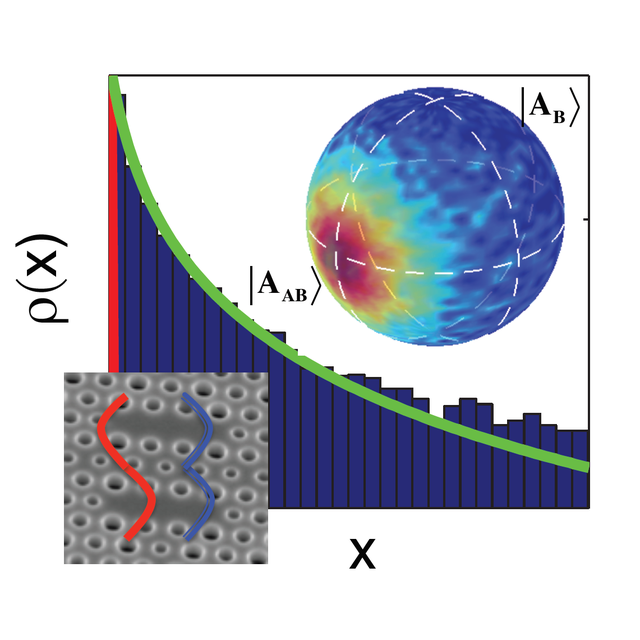News from Institut de physique of CNRS - April 27, 2018 (released in French)
Thanks to two coupled nanolasers, physicists were able to generate an out-of-equilibrium system emitting multi-photon bursts, known as "super-thermal" light. This approach is not restricted to lasers but it can be extended to other nanoscale systems.
Due to their small size, nanolasers have remarkable properties, including low power consumption and small footprint. They are the subject of intense research aiming at various applications, from telecommunications to quantum information. By coupling them in a compact way, it is possible to tailor the statistics of the emitted photons, producing in particular « extra noise » or « extra correlations », which is an asset for applications such as the non-linear energy conversion, the "ghost" imaging that is developed for astrophysics and the quantum information.
When the coupling between the nanolasers is weak, the emission of each laser can be well distinguished. But if the coupling is strong enough, the photons get distributed between the two hybrid modes, and become quite insensitive to perturbations. It is the energy exchange between these modes that is studied here, when the system is excited by light pulses shorter than the electronic characteristic times involved. Such excitation places the system out of equilibrium. One of these modes behaves as a « conventional laser » mode and it is subjected to small fluctuations, while the other one undergoes a particular noisy regime. It emits flashes of photons with a so-called "super-thermal" statistics: the photons are not emitted one by one or randomly –in the sense of Poisson– , but in the form of bursts where the quanta are concentrated in short times. This demonstration was made possible thanks to an original set-up enabling the measurement of the complete statistics of the emitted photons, in spite of the very short times in play. Researchers are now aiming to mold the statistics with very few photons, in the quantum regime.
This approach does not require the engineering of special emitters or the interaction between modes, as it has been implemented so far. Such a “generic route”, obtained by driving the system far-from-equilibrium through a rapid variation of a parameter or « quench », can be transposed to many other systems. This is for instance the case of Brownian motion experiments applied to suspended pollen. In this analogy, the pollen grains and their potential energy can be mapped to photonic states. The system gets out of equilibrium due to a sudden drop in temperature. It can therefore be observed that grain distribution in the space/time also follows a "super-thermal" statistics.
The nascent study of out-of-equilibrium statistics in nanoscale, low photon number systems is particularly promising. This work, published in the journal Physical Review X by a team of physicists from the Centre de Nanosciences et de Nanotechnologies - C2N (CNRS / Université Paris-Sud) was produced in collaboration with the University of the Balearic Islands.
Figure : Simulated response of coupled nanolasers under excitation of a short pulse showing the distribution of the population difference between the modes and more generally the distribution of the optical field. © A. M. Yacomotti, C2N (CNRS/Univ. Paris-Sud)Reference:
Far-from-equilibrium route to superthermal light in bimodal nanolasers
M. Marconi, J. Javaloyes, P. Hamel, F. Raineri, A. Levenson and A. M. Yacomotti
Physical review X (2018)
DOI: doi.org/10.1103/PhysRevX.8.011013
- Centre de Nanosciences et de Nanotechnologies – C2N (CNRS/Université Paris-Sud/Université Paris Diderot)
- Departament de Física, Universitat de les illes Balears, Spain
Contact:
- Alejandro M. Yacomotti, CNRS researcher









